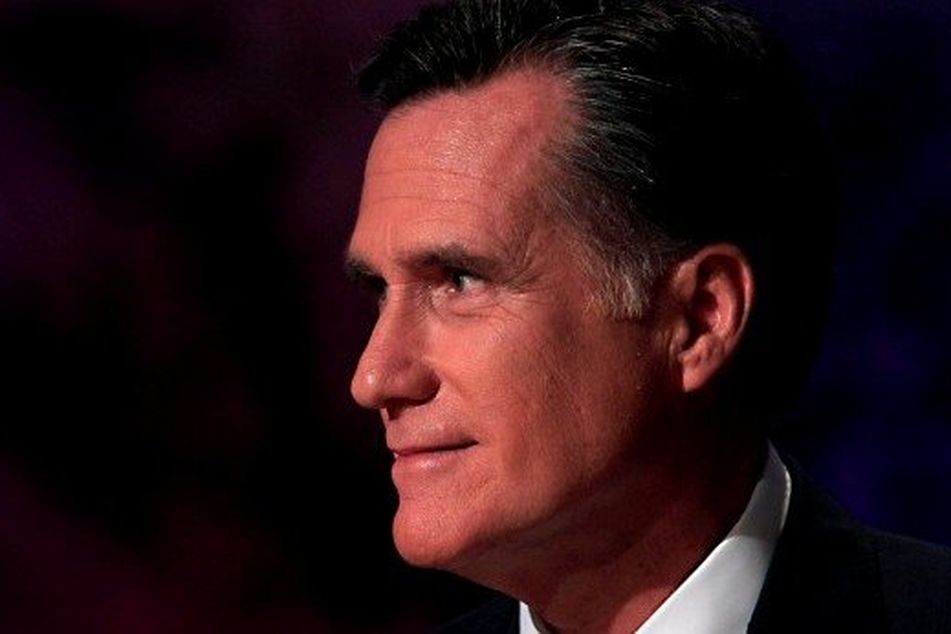Romney tax plan could gut middle-class deductions
 Staring at Romney's ceiling
Staring at Romney's ceiling
Homeowners in high-tax states likely to be snared by $17K cap; 'another layer of complexity'
On taxes, Mitt Romney is long on promises and short on details.
The Republican presidential nominee pledges to “lower taxes on middle-income families,” without giving high earners another tax cut or adding to the U.S. budget deficit. He can do that, he says, by capping the value of tax breaks available to any individual taxpayer.
His tax plan, however, would upend financial planning for millions of middle-class households, denying them thousands of dollars in annual deductions. Earlier this week, after months of refusing to specify which tax breaks he would curtail, Romney said taxpayers might be able to take a total of no more than $17,000 in deductions each year.
That won’t bring in enough revenue to make up for almost $5 trillion the government will lose over 10 years once tax rates are reduced by 20 percent as Romney has proposed, according to economist William Gale of the Brookings Institution in Washington.
“It doesn’t come close to paying for the $5 trillion,” said Gale, who co-authored a study of Romney’s tax plan for the non-partisan Tax Policy Center in Washington.
At least 3.7 million U.S. taxpayers last year reported deductions of $25,000 or more. About 10 million others wrote off $15,000 to $25,000. Romney says their taxes wouldn’t go up, and in fact would decline, under his 20 percent across-the-board tax rate cut.
‘Revenue Neutral’
The Romney campaign disputes the center’s analysis and has cited competing studies by economists at Princeton University in New Jersey and Rice University in Houston that back his initial tax plan.
The former Massachusetts governor describes his proposal as “revenue neutral,” meaning the federal government would raise as much money as it currently does. Asked to explain who would pay more to compensate for middle-income households paying less in taxes, a campaign spokesman didn’t immediately respond.
Romney this week suggested the cap as a way to help pay for his proposed tax rate cut. The deduction cap would be one piece of a three-part concept for broadening the tax base, which the Romney campaign has said is designed to jump-start economic growth.
Some families that both Romney and President Barack Obama describe as middle-class would end up with a tax cut under Romney’s plan. Homeowners living in states with high state and local taxes, however, could end up worse off, according to a preliminary analysis by Bloomberg Government.
‘High-Tax States’
The $17,000 deduction cap “targets taxpayers residing in high-tax states that pay a lot of mortgage interest,” says Bloomberg Government analyst Patrick Driessen, who spent 25 years as an economist for the congressional Joint Committee on Taxation.
A family living in Ohio that earns $150,000, donated $4,000 to charity and paid 4.5 percent interest on a $200,000 mortgage as well as $4,000 in property taxes in 2012 would see a tax cut of more than $3,000 under Romney’s plan, according to a calculation prepared for Bloomberg News by Tim Steffen, director of financial planning at Robert W. Baird & Co. in Milwaukee.
Under the current tax code, such a family would owe $21,819 in federal income tax, compared with $18,728 under Romney’s plan.
A similar family living in California or New York, where state taxes are much higher, wouldn’t be as fortunate. Steffen emphasized the difficulty of analyzing Romney’s plan because the candidate has provided few details as to how he would treat deductions and credits.
Tax Increase
Using slightly different assumptions, Tony Nitti, a partner at WithumSmith & Brown PC in Aspen, Colorado, who prepares taxpayer returns for high earners, found that Romney’s plan could increase taxes for some middle-income families.
Nitti assumed an Ohio family with income from wages of $150,000, a 30-year mortgage at 5 percent interest with a beginning balance in 2012 of $300,000, generating a mortgage interest deduction for 2012 of $13,666. Their itemized deductions included real estate taxes of $5,000, charitable donations of $4,000 and state income tax payments of $6,000.
If Romney’s proposed cap applies to itemized deductions and personal exemptions, this family would pay more under Romney’s plan, Nitti said. He calculated that their tax bill would rise to $20,248 from $18,783 under current law — an increase of $1,465.
Layer of Complexity
“The reason you cut rates and broaden the tax base is to simplify the tax code,” Nitti said. “If instead you just put a cap on, you’ve not simplified it and you’ve just added another layer of complexity.”
Romney’s interest in capping deductions differs from an earlier proposal by Martin Feldstein, an economics professor at Harvard University. Last year, Feldstein, a former adviser to President Ronald Reagan, suggested limiting deductions to 2 percent of a taxpayer’s adjusted gross income. His plan would have increased overall tax revenue by $278 billion in 2011 to reduce the deficit.
“My idea was to cap the revenue loss not the deductions per se,” Feldstein wrote in an e-mail. “And it extended to the health care exclusion. So it is not comparable to the Romney suggestion.”
Princeton’s Harvey Rosen, an economics professor, concluded that Romney’s plan would be as progressive as the current system if Congress eliminated the most widely used deductions by taxpayers earning more than $100,000 annually. Rosen’s analysis abolished deductions for home mortgage interest payments, employer-provided health insurance, state and local taxes, charitable contributions, and the unrealized increase in the value of life-insurance policies for households with six-figure incomes.
Rosen declined to comment yesterday on the proposed $17,000 deduction cap, saying he hadn’t studied it.
‘Got to Give’
Gale, who was a senior White House economist in the administration of President George H.W. Bush, says the Tax Policy Center is analyzing Romney’s latest concept of capping deductions. It appears the deduction cap would raise only $1 trillion to $2 trillion of the needed $5 trillion, he said in a telephone interview.
“Something’s got to give with all the things he’s promised,” he said. “It’s not clear what.”
In the Oct. 3 presidential debate, Romney rejected Obama’s statement that he was proposing a “$5 trillion tax cut” tilted toward the wealthy. “I will not under any circumstances raise taxes on middle-income families. I will lower taxes on middle income families,” Romney said.
In an Aug. 16 analysis, the Tax Policy Center found that cutting rates for taxpayers making more than $200,000 a year would cost the U.S. government $251 billion in revenue while curtailing tax breaks would bring in $165 billion.
Reviving Growth
Analyses that the Romney campaign has cited, including that by Princeton’s Rosen, say that gap can be closed.
Romney describes his tax plan as essential to reviving the economy, especially through improved incentives for small businesses to hire. “For me, this is about jobs. This is about jobs for the American people,” he said during the debate.
Obama criticized Romney for being vague about his tax plans, suggesting he was hiding details because they would hurt the middle class.
“He is saying that he is going to pay for it by closing loopholes and deductions,” the president said during the debate. “The problem is that he’s been asked over 100 times how you would close those deductions and loopholes, and he hasn’t been able to identify them.”
Romney took issue with Obama’s contention. Instead, he said he is laying out general principles and leaving the details to negotiations with lawmakers after the election.
Different Caps
He also further muddied the few details that have been made public, including suggesting different potential deduction caps.
“What are the various ways we could bring down deductions, for instance?” Romney asked. “One way, for instance, would be to have a single number. Make up a number, $25,000, $50,000. Anybody can have deductions up to that amount. And then that number disappears for high-income people.”
“There are alternatives to accomplish the objective I have, which is to bring down rates, broaden the base, simplify the code, and create incentives for growth,” Romney said.
The Republican candidate also described his rate-lowering, base-broadening plan as having “the same idea behind Bowles- Simpson,” referring to the national debt-reduction commission known for its co-chairmen, onetime White House Chief of Staff Erskine Bowles, a Democrat, and former Republican Senator Alan Simpson of Wyoming.
Their report, however, would have increased taxes on capital gains and dividends, while Romney intends to continue taxing investment gains at a preferential 15 percent rate. His plan also would eliminate taxes on capital gains, dividends and interest for individuals making less than $200,000 a year.
–Bloomberg News
Learn more about reprints and licensing for this article.






